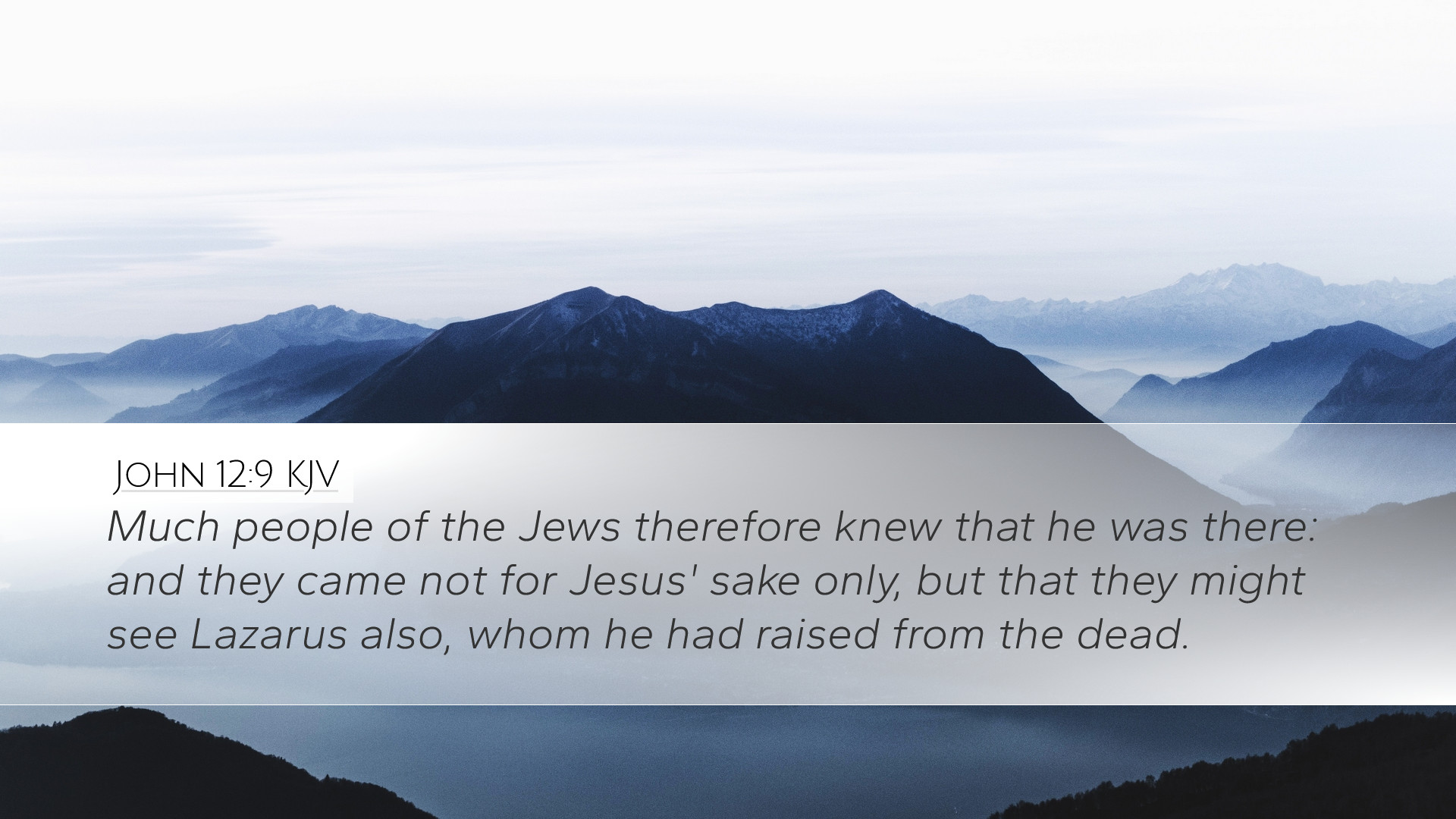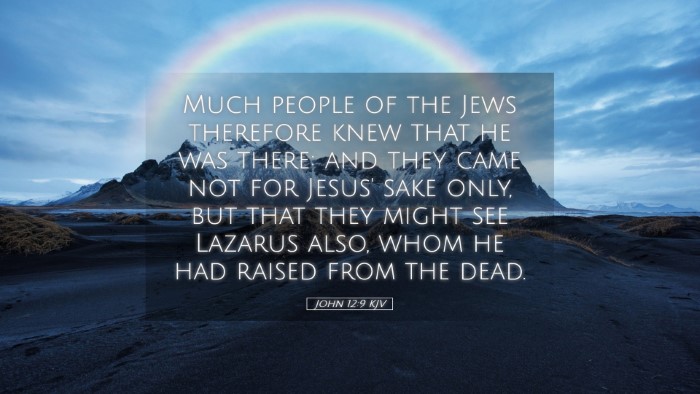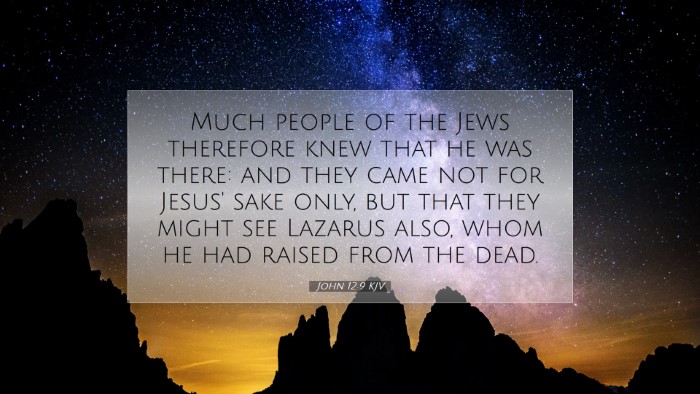Commentary on John 12:9
In John 12:9, we read: "Now a great many of the Jews knew that He was there; and they came, not for Jesus’ sake only, but that they might also see Lazarus, whom He had raised from the dead." This verse serves as a pivotal moment in the Gospel of John, linking the raising of Lazarus to the ministry of Jesus and the growing tension surrounding His identity.
Contextual Overview
This event occurs shortly before the Passover and Jesus’ crucifixion and is situated between the miraculous raising of Lazarus in John 11 and the Triumphal Entry in John 12:12-19. The raising of Lazarus, a powerful demonstration of Jesus' authority over death, has drawn significant attention and sets the stage for the events that follow.
Insights from Matthew Henry
Matthew Henry, in his commentary, highlights the multitude of Jews coming not only to see Jesus but also Lazarus. He interprets this gathering as indicative of the phenomenon surrounding Jesus’ ministry, where miraculous signs drew people to Him. Henry notes that the intent of their visit reflects both curiosity and the desire for a deeper understanding of Jesus’ messianic claims.
- The Significance of Lazarus: Henry points out that Lazarus, being raised from the dead, serves as a testimony to Jesus' power. His presence offers a compelling reason for the crowd to come and investigate the claims of Jesus.
- Public Interest vs. Genuine Faith: Henry warns that while many were drawn to Jesus by signs and wonders, not all were genuinely seeking faith. This observation holds a profound lesson on the dangers of superficial faith, where signs overshadow the substance of belief.
Insights from Albert Barnes
Albert Barnes provides a detailed analysis of the text, emphasizing its implications for understanding the nature of belief and the perception of Jesus at that time. He notes that the excitement around Lazarus reflects an essential aspect of Jesus' ministry.
- Drawn by Curiosity: Barnes remarks that many were drawn out of mere curiosity—the spectacle of Lazarus, a known figure raised from death, intrigued the masses, compelling them to seek Jesus.
- Foreshadowing Future Events: He also connects this gathering to the subsequent actions of the Jewish leaders who, alarmed by Jesus' growing popularity, would plot against Him. This tension is crucial as it sets in motion the events leading to the passion narrative.
- The Role of Witness: Barnes emphasizes the importance of Lazarus as a witness. The testimony of those who have experienced miraculous intervention becomes a powerful tool in evangelism.
Insights from Adam Clarke
Adam Clarke delves into the cultural and historical implications of the event described in this verse. He focuses on the sociological dynamics at play, considering who the Jews were that came to see Jesus and Lazarus.
- A Diverse Audience: Clarke suggests that the crowd consisted of various groups—some were genuine followers of Jesus, while others were skeptics or those driven by curiosity regarding the miraculous signs.
- The Implications for Jewish Leadership: He also comments on the implications this gathering had for Jewish leadership. The miracle of Lazarus served as a challenge to the existing religious authorities and raised questions about their interpretations and control over the faith community.
- Spiritual Insight: Clarke points out that this event serves as a metaphor for spiritual awakening. Just as Lazarus was brought from death to life, so too are those who come to Jesus invited into a new life through faith.
Theological Reflections
From the insights gathered from these commentaries, several theological themes emerge that are essential for pastors, students, and scholars alike:
- The Nature of Faith: This passage invites reflection on the nature of faith and belief. Are we drawn to Christ solely for what He can do for us, or do we seek a deeper relationship with Him?
- Witness and Testimony: Lazarus’ role as a living testimony to Jesus’ power emphasizes the importance of sharing our personal experiences of faith as a means to beckon others towards Christ.
- Conflict and Response: This verse foreshadows the conflict that will arise as Jesus’ influence grows. It serves as a reminder of the polarized responses that faith in Christ can provoke in communities.
- The Call to New Life: Just as Lazarus was called from death to life, believers are called to recognize their own spiritual resurrection that comes from faith in Christ.
Conclusion
John 12:9 encapsulates a critical moment in the gospel narrative, revealing the intersection of miracles, belief, and social dynamics. The varying motives behind the crowds’ curiosity about Lazarus and Jesus challenge us to examine our reasons for seeking God. As we reflect on this passage, may we be inspired to not only seek the signs of Jesus' work but to pursue the transformative relationship He offers.


